|
Port Douglas possesses an enviable location on the doorstep of two of the worlds most unique and ecologically valuable environements, the UNESCO World Heritage listed Great Barrier Reef and the Wet Tropics World Heritage area. 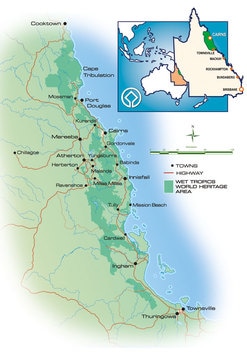 The Wet Tropics World Heritage Area - Click to enlarge The Wet Tropics World Heritage Area - Click to enlarge To gain a World Heritage listing from UNESCO an area must have "Outstanding Universal Values' - in simple terms this means that the area is of such natural and/or cultural significance that it must be protected for the world's current and future generations. UNESCO is a United Nations body with more than 195 countries as members. On our Port Douglas Rainforest and Outback tours we pass through and visit stunningly beautiful sections of the Wet Tropics World Heritage area. Our expert guides share with you the beauty and significance of these forests and their wildlife. The Wet Tropics rainforest near Port Douglas include the Mowbray, Kuranda, Mt Lewis and Daintree National Parks. On our tours we visit a sections of the Wet Tropics World Heritage area known as the Crater Lakes National Park and the Curtain Fig National Park. The Wet Tropics rainforests stretch 450km from Townsville in the south to Cooktown in the north, hugging a narrow coastal mountain range adjacent to the coast. It passes cities and coastal towns including Cairns, Innisfail, Cardwell, Port Douglas and Mossman. The Wet Tropics is unique in that it is the only place in the world where you have 2 World Heritage areas side by side, the Wet Tropics and the Great Barrier Reef. You can literally hike in the Wet Tropics World Heritage area in the morning and snorkel the World Heritage listed Great Barrier Reef in the afternoon! The rainforests found within the Wet Tropics is the oldest continuously surviving rainforest in the world. The area is a living museum containing plants and animals that have barely changed in millions of years through to much more highly evolved flora and fauna. In an Australian context, the Wet Tropics covers less than 0.2% of Australia, but contains 30% of the marsupial species, 60% of bat species, 25% of rodent species, 40% of bird species, 30% of frog species, 20% of reptile species, 60% of butterfly species, 65% of fern species, 21% of cycad species, 37% of conifer species, 30% of orchid species and 18% of Australia’s vascular plant species. It is therefore of great scientific interest and of fundamental importance to conservation. 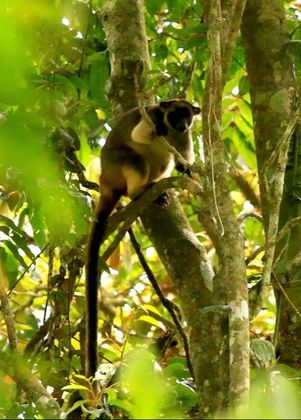 A Lumholtz Tree kangaroo, rarely seen and very shy A Lumholtz Tree kangaroo, rarely seen and very shy Although the entire Wet Tropics area only encompasses 0.26% of the Australian continent it has Australia's great plant and animal diversity with many of the species found in the area found nowhere else in the world. It is also recognised for its outstanding natural beauty with its stunning rainforest vistas, waterfalls, river gorges and wild rivers. A visit to the Wet Tropics World Heritage area is a must-do for any visitor to Port Douglas or Cairns. On our Wildife tour and our Rainforest and Outback tour we take you to beautiful sections of the Wet Tropics World Heritage area where you get to see for yourself just how special and unique these rainforests are. Departures from both Cairns and Port Douglas are available. Port Douglas is truly blessed to be in such close proximity to the rainforests of the Wet Tropics World Heritage area! Click here to contact Blue Adventures to find out more about our Rainforest tours & Wildlife tours.
0 Comments
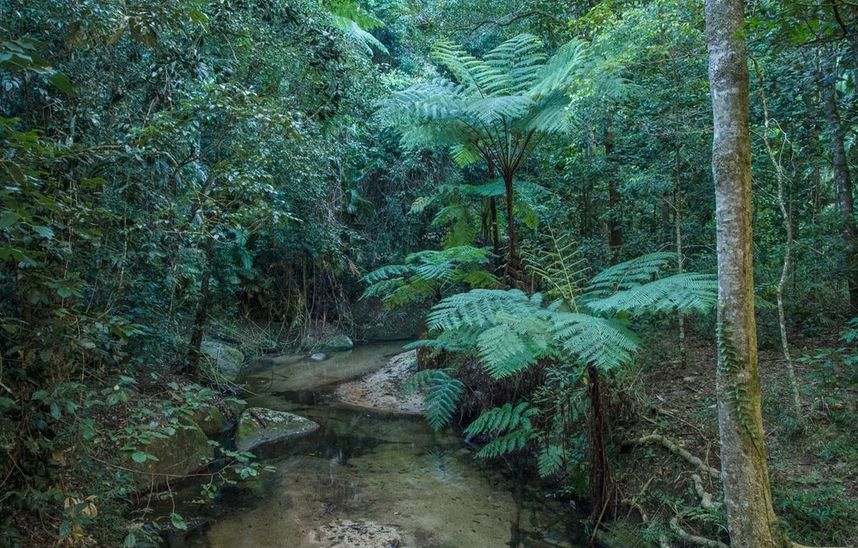 A rainforest creek in the Wet Tropics surrounded by tall Tree Ferns. A rainforest creek in the Wet Tropics surrounded by tall Tree Ferns. Port Douglas and north Queensland, like much of northern Australia, is a land of 2 distinct seasons - the 'wet' and the 'dry'. Known to Port Douglas, Daintree and Cairns locals as the 'Green Season', it is a time of abundant growth in the rainforests and savanna around Port Douglas and across far north Queensland. Locals will often tell you that the rainforest looks its best just after a torrential downpour when the creeks are flowing and the plants are dripping with moisture. The wet season falls between December and April and is when we usually receive more than 60% of our rainfall. In Port Douglas we may have 1500+ mm (2 metres/6 feet) of rainfall and on the high peaks of the Wet Tropics such as Bartle Frere, Bellenden Ker and Thorntons Peak there can be over 6000 mm (6 metres/18 feet) of rainfall in just 3-4 months. A common misconception of those coming to the area is that it will be raining for weeks on end and that they will be stuck in a hotel room for the duration of their holidays. The reality is often very different! 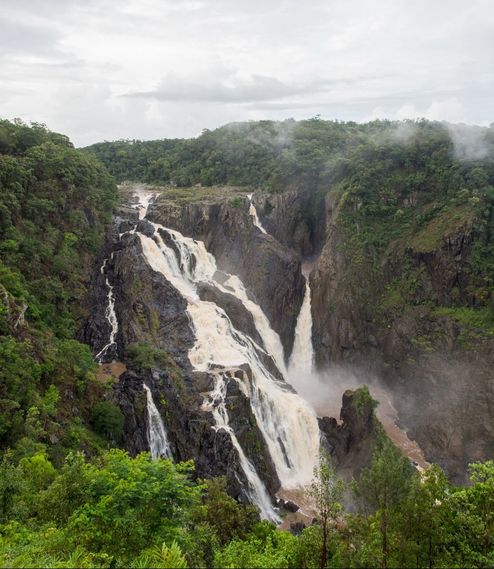 The impressive Din Din (Barron) falls in wet season flood The impressive Din Din (Barron) falls in wet season flood Rain will often fall overnight or early morning with the clouds clearing to reveal a beautiful sunny day. We can have weeks of sunny weather between tropical storms and even if you do get a few days of rain whilst on Port Douglas holidays there is still plenty to do - like a rainforest tour! The rainforests, sclerophyll forests and savanna of tropical north Queensland rely on the rains of the wet season to rejuvenate and grow. At the end of a long dry season you can visibly see the effects of a lack of rain. From dry and limp looking Basket and Antler ferns in the rainforest, to dry creek beds and parched grasslands. As the wet season develops and the streams, creeks and rivers all begin to flow with renewed vigour the environment quickly changes. The savanna and sclerophyll forests become a sea of green grasses and new growth. The rainforest becomes alive with dry streams flowing again, funghi quickly growing and plants bursting with life. The heavy rains of the wet season prepare the land for the dry times that will inevitably follow. Join Blue Adventures on a Wildlife Tour or Rainforest & Outback Tour to learn more about our unique and diverse environments, how these habitats have developed over millions of years and to see how the plants and animals have adapted to live in such extremes. |
AboutWith World Heritage rainforest and Outback Queensland on our doorstep, Port Douglas is ideally situated to explore tropical north Queensland. Archives
April 2017
Categories
All
|
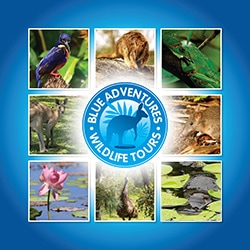
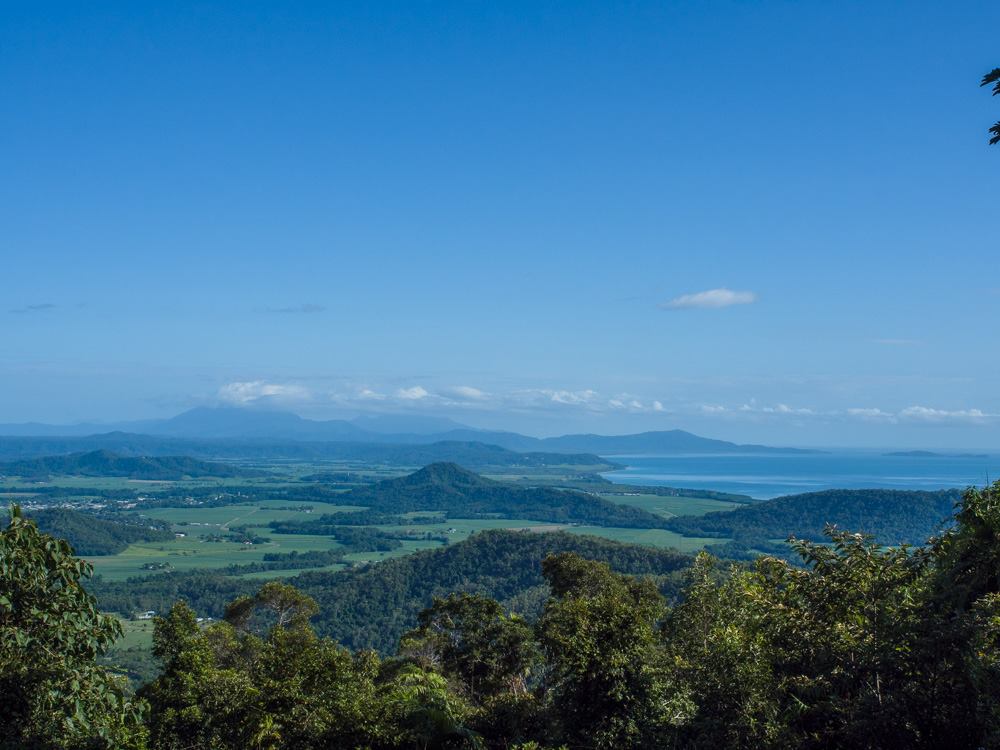
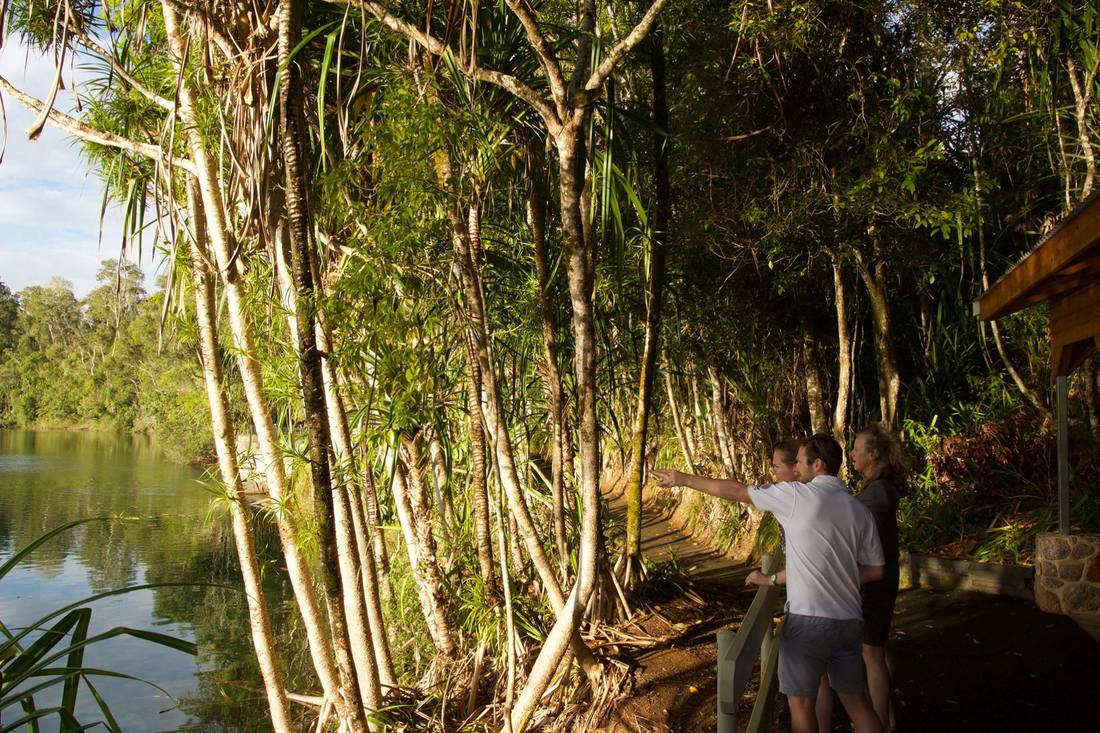
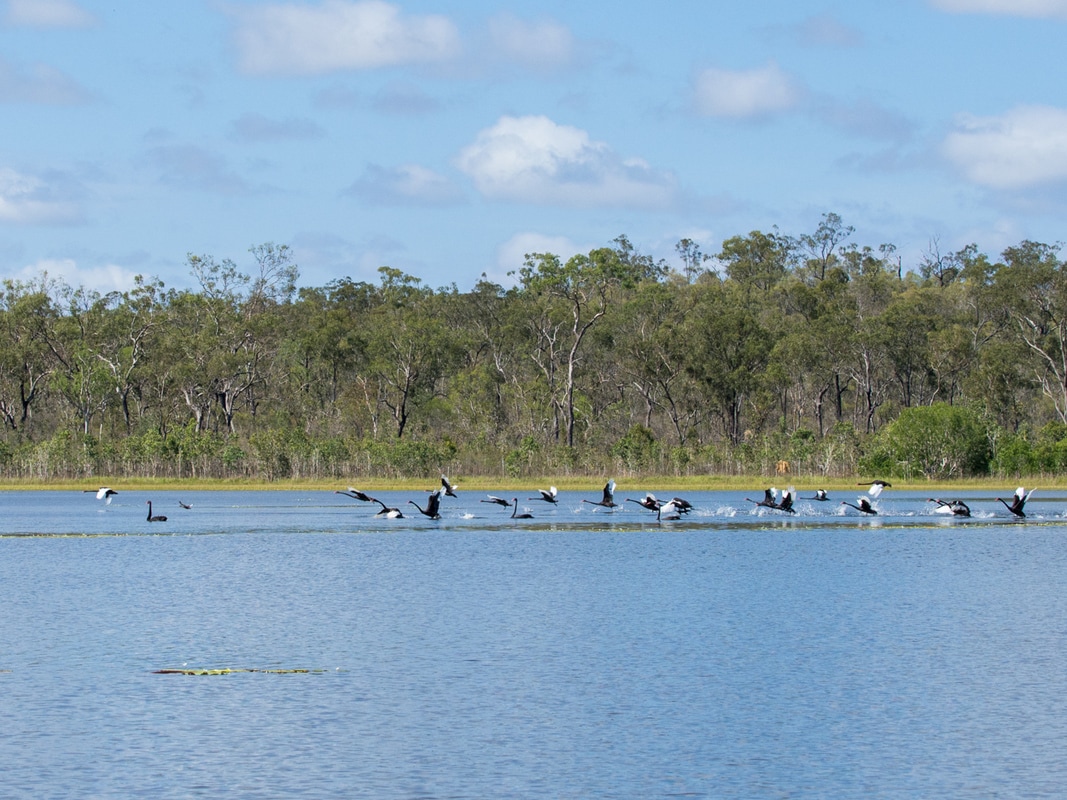
 RSS Feed
RSS Feed